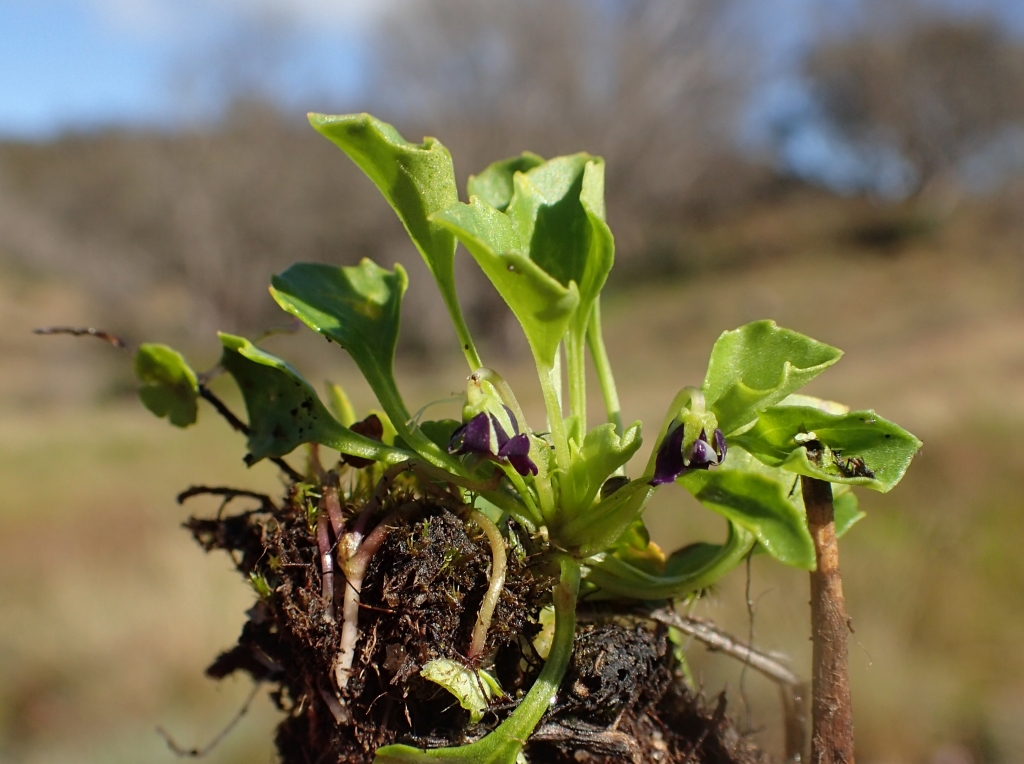Viola fuscoviolacea
(L.G.Adams) T.A.JamesStoloniferous perennial herb. Leaves tufted; lamina broadly ovate to ovate-rhombic, 5–7 mm long, 4–9 mm wide, base cuneate (or rarely almost truncate), tapering to petiole, apex obtuse, margins scalloped to coarsely toothed; petioles narrowly winged, 1–2.5 cm long; stipules free, linear-lanceolate, 1–5 mm long, laciniate. Flower-scapes 2–25 mm long, shorter than or just exceeding leaves, bracteoles below middle. Sepals lanceolate, 1.5–2 mm long, acute, basal appendages small; petals 2–3 mm long, blackish-violet (rarely paler), lower (anterior) petal obovate-elliptic, c. 2 mm wide, without spur; lateral petals entire, bearded. Capsule ovoid, 4–7 mm long. Flowers mostly Dec.–Jan. (Sep.–Nov. in lowlands).
GipP, HSF, HNF, VAlp. Also NSW, Tas. Grows in damp alpine herbfields of the alps (e.g. Buffalo Plateau, Bogong High Plains, Mt Wellington, Nunniong Plateau) with isolated occurrences in near-coastal Lepidosperma longitudinale sedgeland between Wilsons Promontory and Sale.
The South Gippsland occurrences appear to be genuine V. fuscoviolacea, but the very different habitat and altitude suggests these populations warrant further investigation.
Entwisle, T.J. (1996). Viola. In: Walsh, N.G.; Entwisle, T.J., Flora of Victoria Vol. 3, Dicotyledons Winteraceae to Myrtaceae, pp. 82–84. Inkata Press, Melbourne.
 Spinning
Spinning

